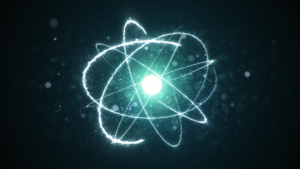Nuclear energy is typically viewed as a very interesting aspect of the energy industry and many people wonder ‘How do nuclear power plants work?’
The process of using the energy released by splitting atoms was discovered in the 1940s but nuclear power wasn’t generated on a commercial level until the 1950s. That means there have been nuclear power stations operating for nearly 70 years.
While some people do have reservations about nuclear power there is no doubt that it is a green source of energy, as it is the world’s second largest source of low-carbon power. More nations than ever before are now exploring the use of nuclear energy, mainly due to increased demand for electricity and growing concerns around climate change.
Special Piping Materials has worked within the supply chain of the nuclear industry for many years, supplying stainless steel pipes, fittings and flanges that form essential parts of nuclear power stations.
So, how do nuclear power plants work?
This question can be answered very simply as it is similar to many other types of power generation: Water is heated, steam is produced, this then spins very large turbines that, in turn, generate electricity.
The interesting part of nuclear energy is that the water is heated due to nuclear fission. Fission itself takes place at the central core of a nuclear reactor where uranium fuel is present. The uranium fuel takes the form of ceramic pellets that are stacked together to create fuel rods. These fuel rods are then bundled together as ‘fuel assemblies’ and a reactor core can contain numerous fuel assemblies. Inside the reactor vessel, the fuel rods are immersed in water and atoms are split into smaller atoms which then releases energy as a by-product in the form of heat.
The water in the core is subsequently heated and then pumped into tubes inside a heat exchanger, those tubes then heat a separate water source which then creates steam. This steam turns a turbine on an electric generator to produce electricity.
Pipes and nuclear power plants
Given the movement required of water and steam through a nuclear power plant, piping systems are naturally an essential part of how nuclear power plants work.
Pipes perform numerous vital functions at nuclear power plants including:
- – Carrying cooling water to the reactor vessel and spent fuel pool
- – Transport steam to the main turbine
- – Provide hydrogen gas to cool the main generators
- – Supply fuel and lubricating oil to the emergency diesel generators
- – Maintain the fire sprinklers ready to extinguish fires
- – Ancillary tasks such as water supply
All these tasks may come as a surprise to some people as the pipelines within nuclear power plants are not always that easily seen and they are usually hidden from view. However, the average nuclear reactor plant will have more than seven miles of pipe inside it.
The conditions in which these pipes must perform are considered to be extremely hostile due to the constantly high pressures and temperatures. These means that the pipes must be made of some of the highest quality material available, such as the stainless steel and nickel alloy pipes sourced and supplied by Special Piping Materials.
How do nuclear power plants work around the world?
As of June 2021, nuclear energy is thought to provide around 10% of the world’s electricity and this power is generated by approximately 445 power reactors that are operational in 32 countries worldwide.
The United States is thought to generate more nuclear power than any other country.
Electricity generation from nuclear power plants in America originally began in 1958. According to data by the EIA (US Energy Information Administration) at the end of 2020, the United States had 94 operating commercial nuclear reactors at 56 nuclear power plants in 28 states, with a combined generation capacity of approximately 96,555 MW.
There are two types of light-water reactors currently operating in America. These are:
- Pressurised water reactors: These reactors pump water into the reactor core under high pressure to prevent the water from boiling. The water in the core is heated by nuclear fission and then pumped into tubes inside a heat exchanger. Those tubes heat a separate water source to create the all-important steam.
- Boiling water reactors: BWRs heat water and produce steam directly inside the reactor vessel. Water is pumped up through the reactor core and heated by fission until it forms steam. The unused steam is then condensed back to water and reused in the heating process.
Data from 2019 showed that France has the second-largest nuclear electricity generation capacity and had the largest share—about 70%—of total annual electricity generation from nuclear energy.
Another major producer and user of nuclear energy is the UAE. The Barakah Nuclear Energy Plant that is located in the Al Dhafra Region of the Emirate of Abu Dhabi, is home to four reactors, each of which can produce 1,400 megawatts (MW) of electricity with nearly zero carbon emissions.
The production of nuclear energy is considered to be a very positive step forward in terms of clean energy. Once fully operational the Barakah Nuclear Energy Plant will have the capacity to prevent the release of more than 21 million tonnes of greenhouse gas emissions per year.
#SpecialPipingMaterials #Nuclear #NuclearEnergy #Energy #EnergySector #LowCarbon
